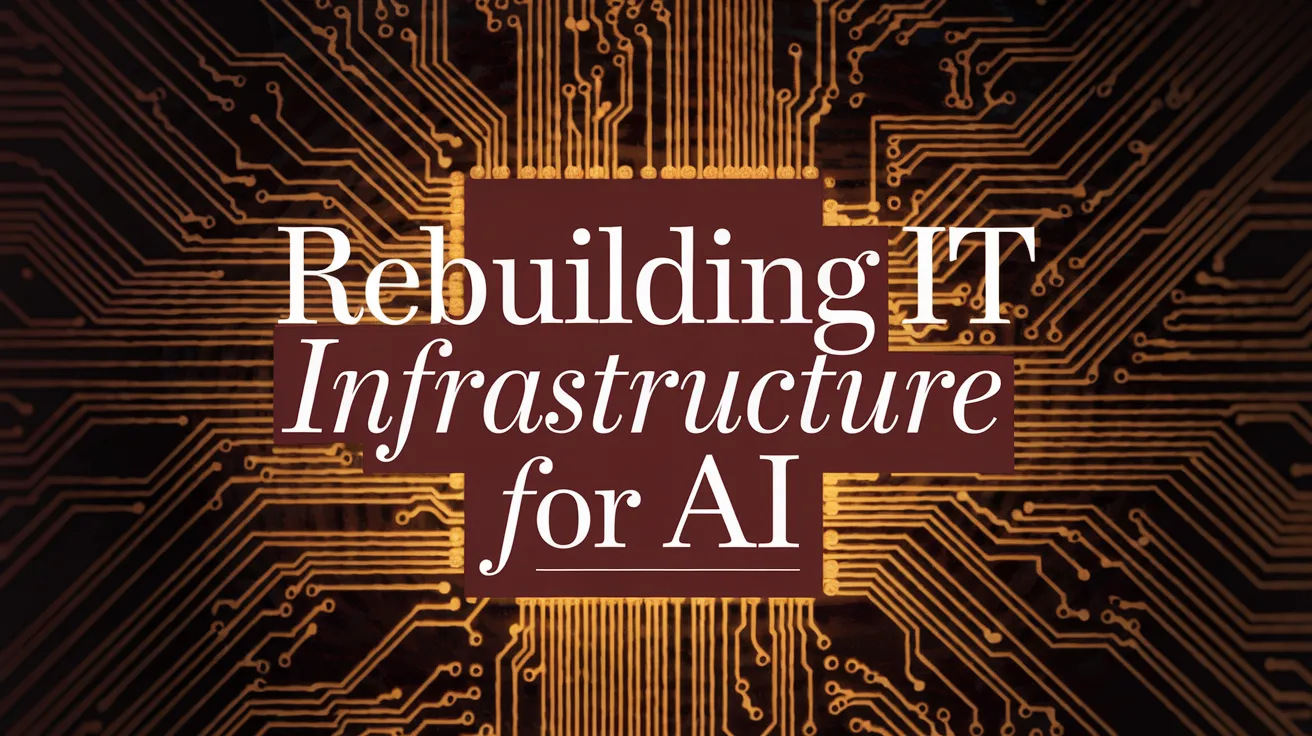Rebuilding IT Infrastructure for AI

In an era defined by technological transformation, top priorities such as artificial intelligence (AI), cloud computing, and cybersecurity are driving a fundamental reshaping of the IT stack. As new models and workloads challenge the capabilities of legacy systems, IT leaders must evaluate which components are equipped for this shift and which may be hindering progress.
According to the Q1 2025 IT Trends Report from JumpCloud, AI-related tools (42%) and cloud infrastructure (40%) emerged as the top spending priorities among IT decision-makers, falling just behind cybersecurity. This convergence indicates that organizations are not merely deploying AI technologies; instead, they are rethinking the entire infrastructure that supports them.
Impact of AI on IT Architecture
The distinct demands of AI workloads require infrastructures capable of handling high-volume data pipelines and scalable compute environments. This necessity has prompted a shift toward more flexible, cloud-native architectures that can evolve alongside increasingly complex and resource-intensive AI systems.
However, legacy systems, particularly those constrained by inflexible data structures or inadequate scalability, pose significant challenges. On-premises infrastructures frequently struggle to meet the computational demands of training and executing AI models. Additionally, outdated security frameworks often fail to accommodate the new vulnerabilities introduced by machine learning technologies.
To effectively build for an AI-driven future, IT leaders must focus on adaptability and integration, crafting environments conducive to the data gravity, model training, and dynamic access needs dictated by AI operations.
The transition to cloud solutions is already in progress; however, this does not signal the demise of on-premises infrastructure. A hybrid approach is becoming increasingly prevalent, particularly among organizations dealing with sensitive data or applications sensitive to latency. Achieving seamless integration across these diverse environments is crucial.
For workloads handling sensitive Personally Identifiable Information (PII) or requiring stringent compliance oversight, maintaining on-prem infrastructure may be necessary. Conversely, less regulated or computationally intensive operations can migrate to the cloud. Many organizations are beginning to transition foundational services—such as identity and directory platforms—away from legacy systems in favor of cloud-based solutions that more effectively accommodate AI-scale operations.
Adapting Security and Compliance
With these infrastructure shifts, security and compliance frameworks are also undergoing rigorous testing. Traditional security models were not designed to accommodate the complexities brought forth by AI, including risks such as adversarial manipulation, data poisoning, and algorithmic bias.
While 48 percent of IT teams report increased investments in cybersecurity, the real challenge lies in evolving these frameworks to address AI-specific threats. This evolution requires establishing protocols for model monitoring, explainability, and access control that align with the dynamic characteristics of AI systems.
Unified management is becoming essential; consolidating identity, access, and device management not only minimizes tool overload but also creates a centralized, data-rich foundation from which AI can drive accelerated decision-making and automation. When core systems function in isolation, identifying anomalies, enforcing policies, or rapidly responding to threats becomes increasingly difficult. A unified stack enhances visibility and control, even with the introduction of new interaction types and access requests from AI systems.
Ultimately, rebuilding the IT stack for an AI-first world is not as simple as tearing down existing systems; it represents an evolutionary process. This evolution necessitates a reassessment of legacy systems that may impede progress, an embrace of hybrid flexibility, and the creation of a secure infrastructure designed for intelligence at scale.
For further insights on how industry peers are addressing AI and other critical IT trends, download JumpCloud’s complete report here.